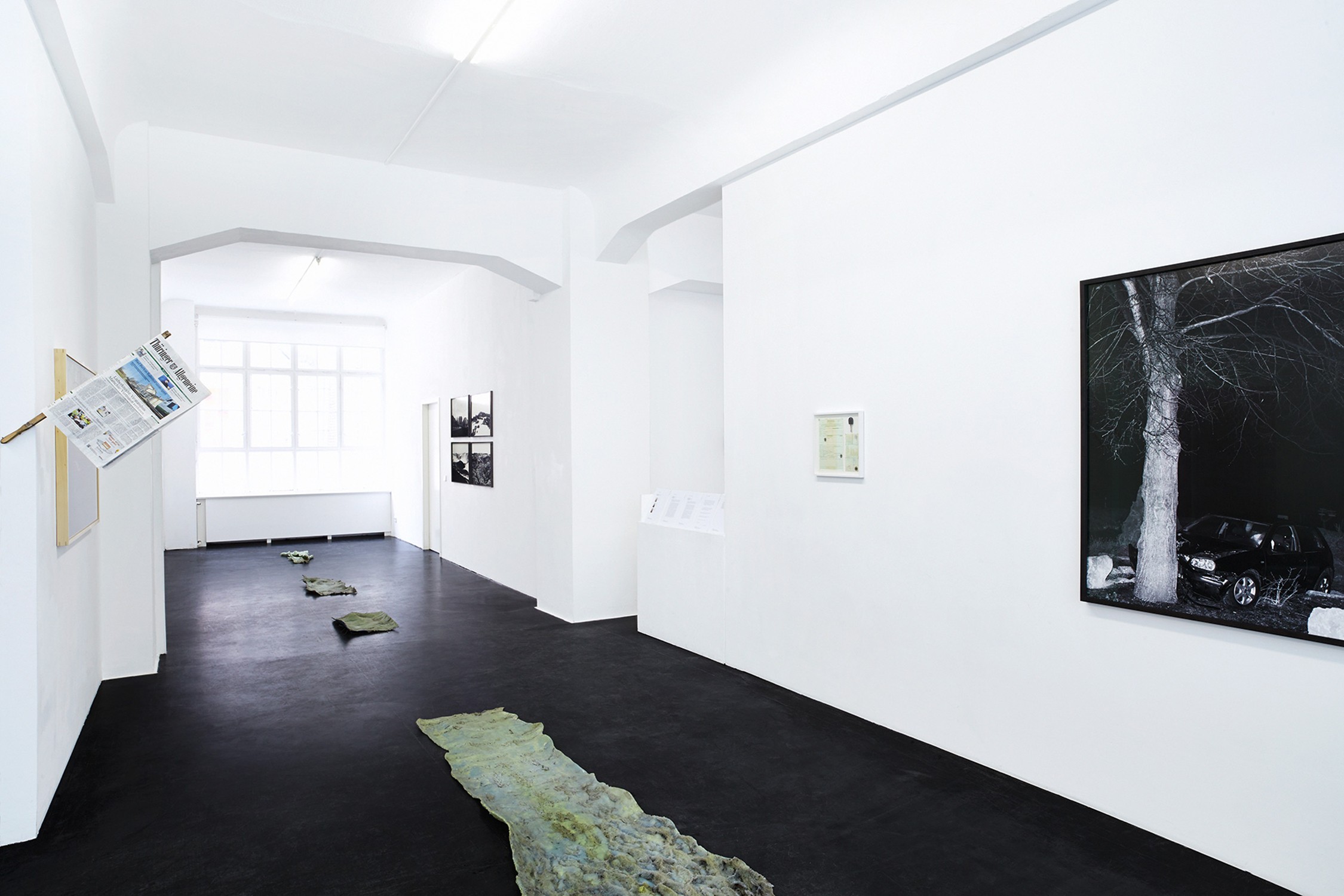
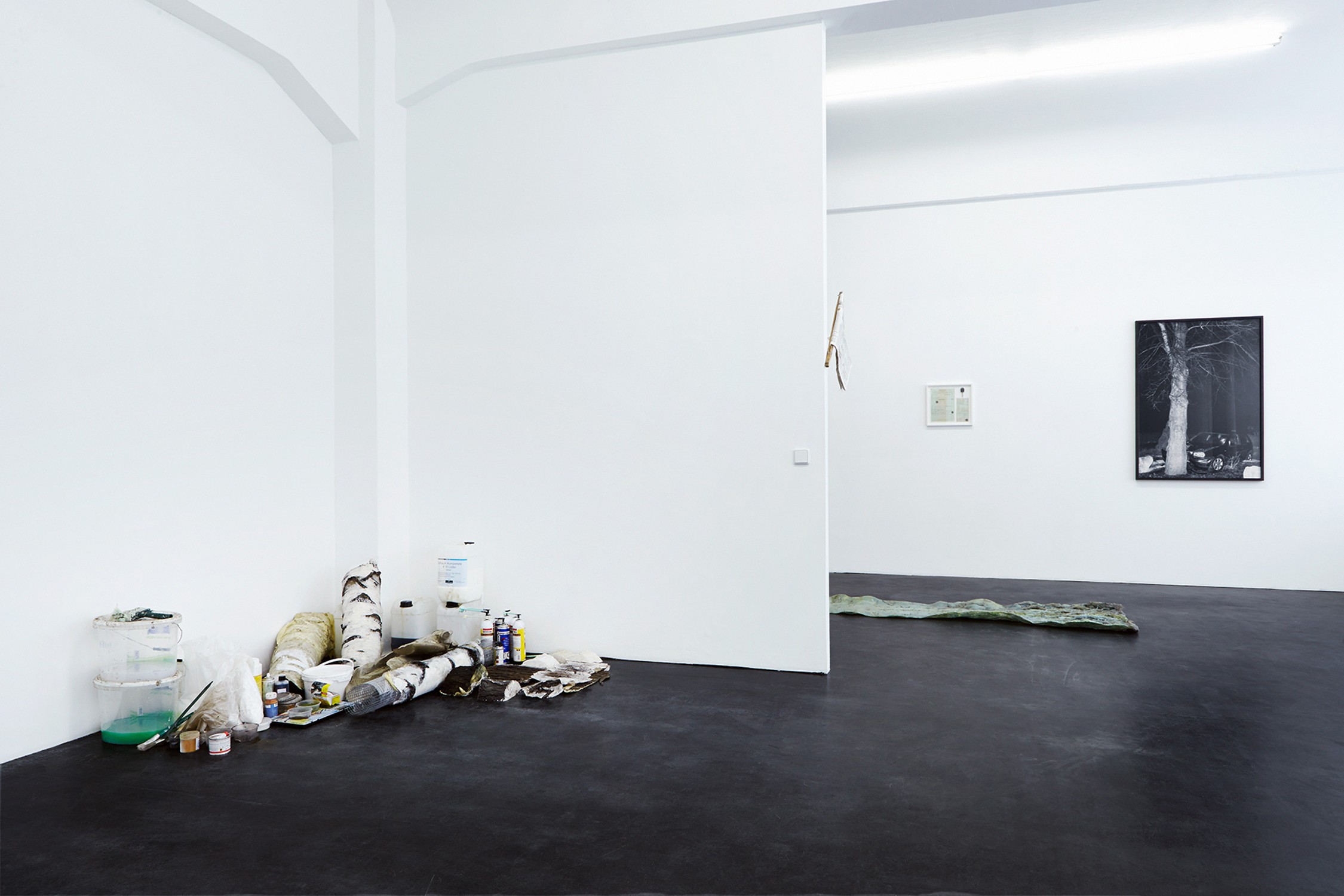
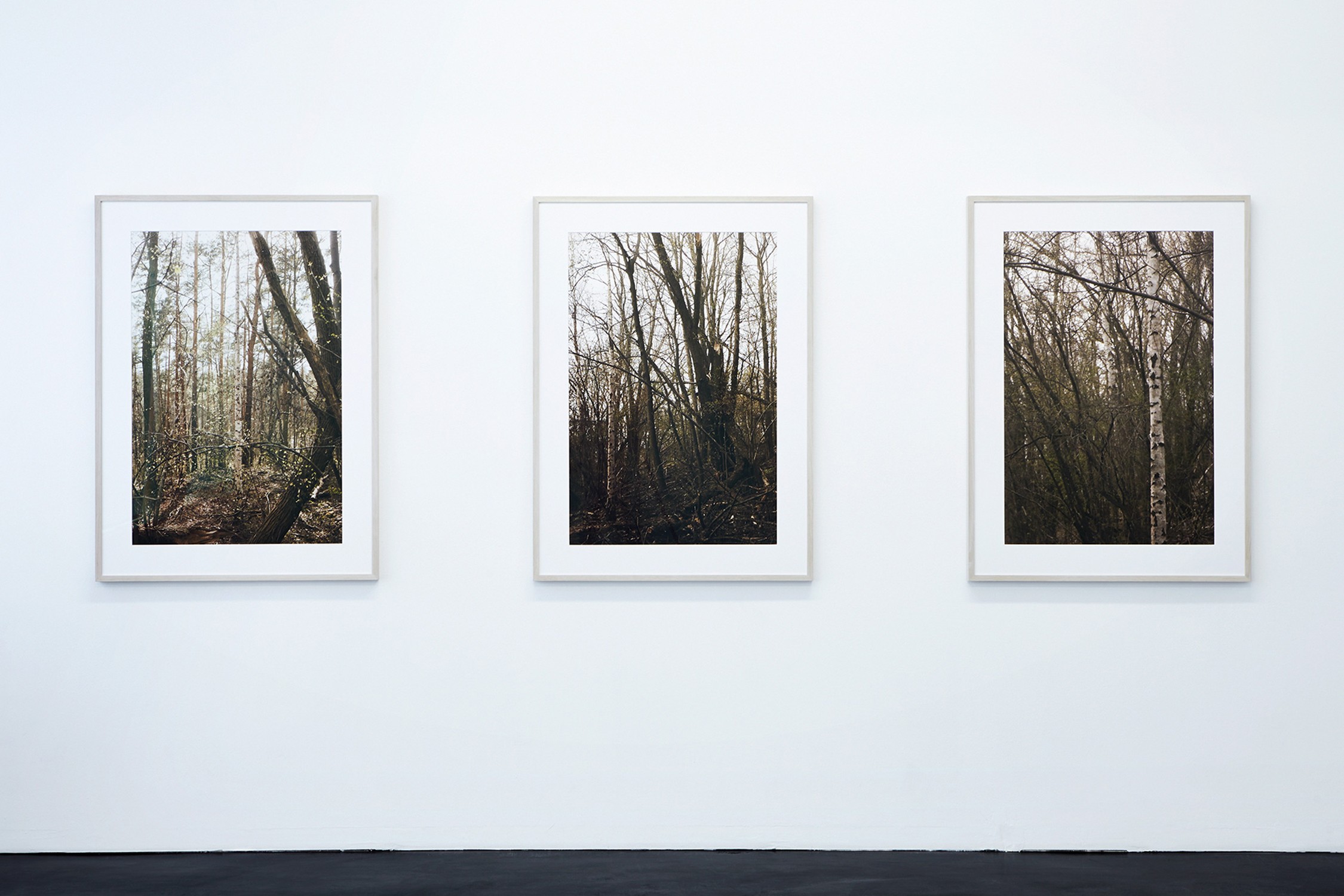
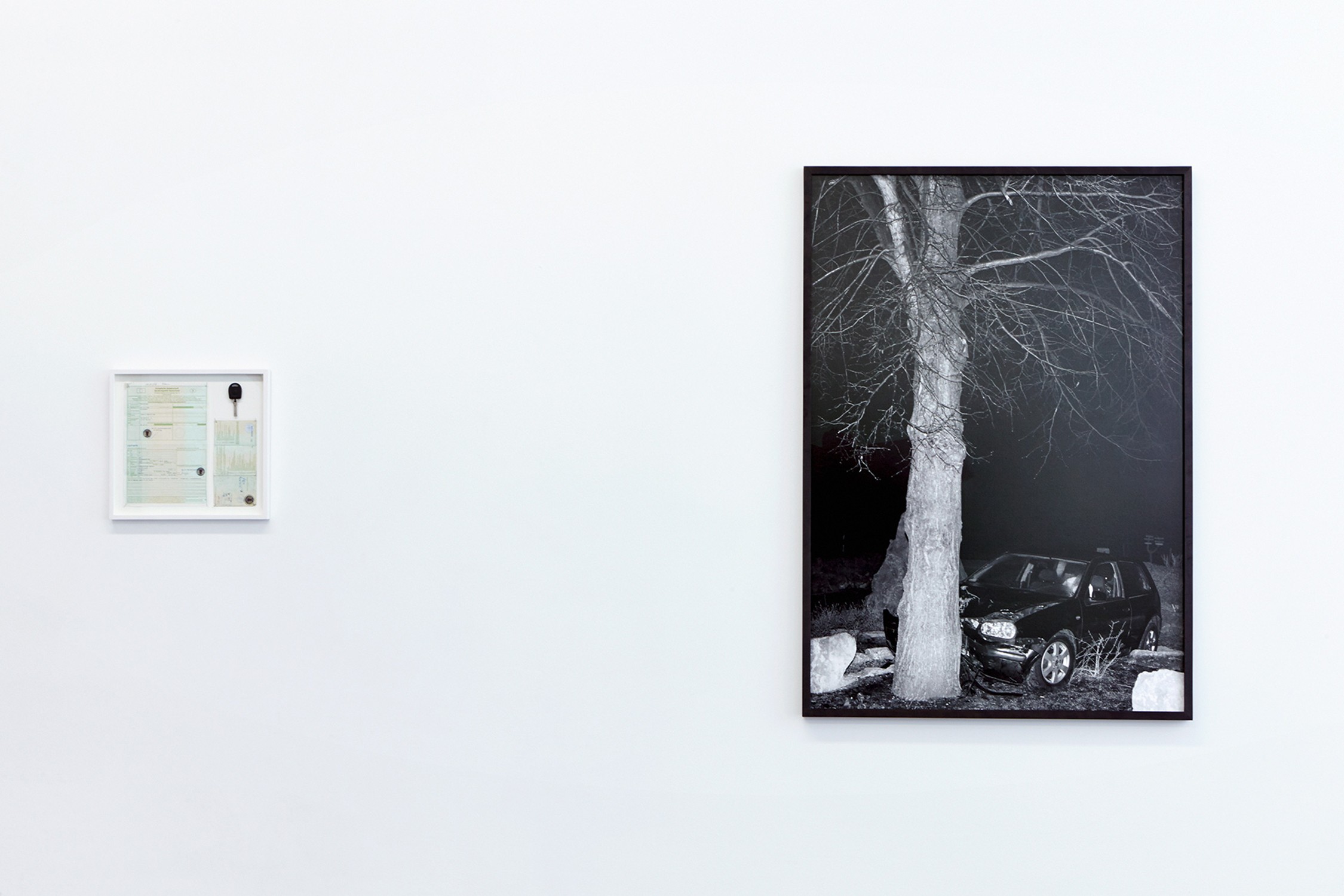
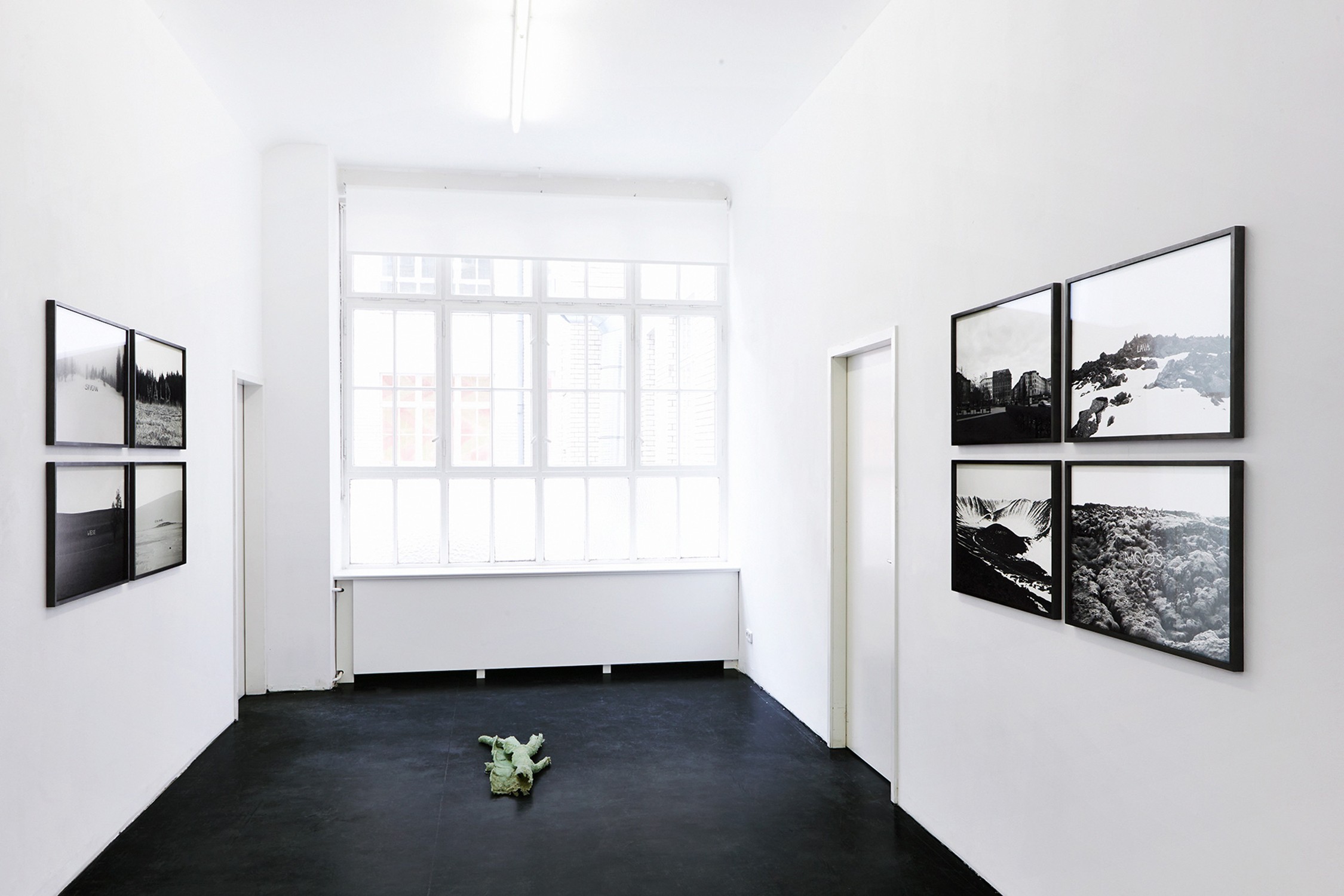
The gallery alexander levy is pleased to be able to present three new work complexes from Julius von Bismarck from 26 April to 15 June 2013 in the exhibit Unfall am Mittelpunkt Deutschlands. Like “Punishment I” in the previous year, the second solo exhibit of Bismarck in the gallery is characterised by a confrontation of “nature” and “culture”.
A basswood tree was planted in February 1991 in the small community of Niederdorla in the Thuringian province. In April 2013, the tree inexplicably became the stage for a strange and “poignant” collision. The accident, like so many others, would hardly have found its way into the newspapers if the tree had not stood at the precise geographical centre, at the “heart” of the Federal Republic of Germany. A car raced into a tree in the middle of the centre, the “bull’s-eye” of the nation: a collision of nature, technology and power – an oddity and a “work”. Julius von Bismarck seizes upon the event and memorably works out its meaning on the basis of photographs of the accident site. He thereby aesthetically emphasises a context originating from random chance or the “work” of an unknown driver.
In addition to photos of the “Accident at the centre of Germany”, the representation of a group of trees with a single “false” birch will be shown in the exhibit. When a single “false” tree stands in the forest, the entire forest is viewed with scepticism. The view of the trees changes. The “naturalness” is fundamentally questioned. The intervention of Bismarck blurs the boundary between cultural product and nature and plays off both against one another. A minimal intervention can alter the perception of the whole. The trees appear in a different light: any one of them might be “false”.
Nature is usually brought to the point in a fraction of a second. We define complex constellations as “forest” without a moment’s hesitation. In a series of nature inscriptions, Bismarck and Julian Charrière directly bring together nature and its conceptual (humanised) form. In a piece of forest they have written “Wald”, on a crater “Krater”, in a meadow “Wiese”, etc. The banality of the terms contrasts with the reality. Because, where “Wald (forest)” is written, the question is raised of whether one is really looking at a “Wald (forest)” or simply some object, which, like art itself, defies definition.